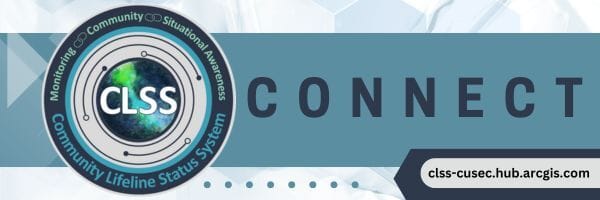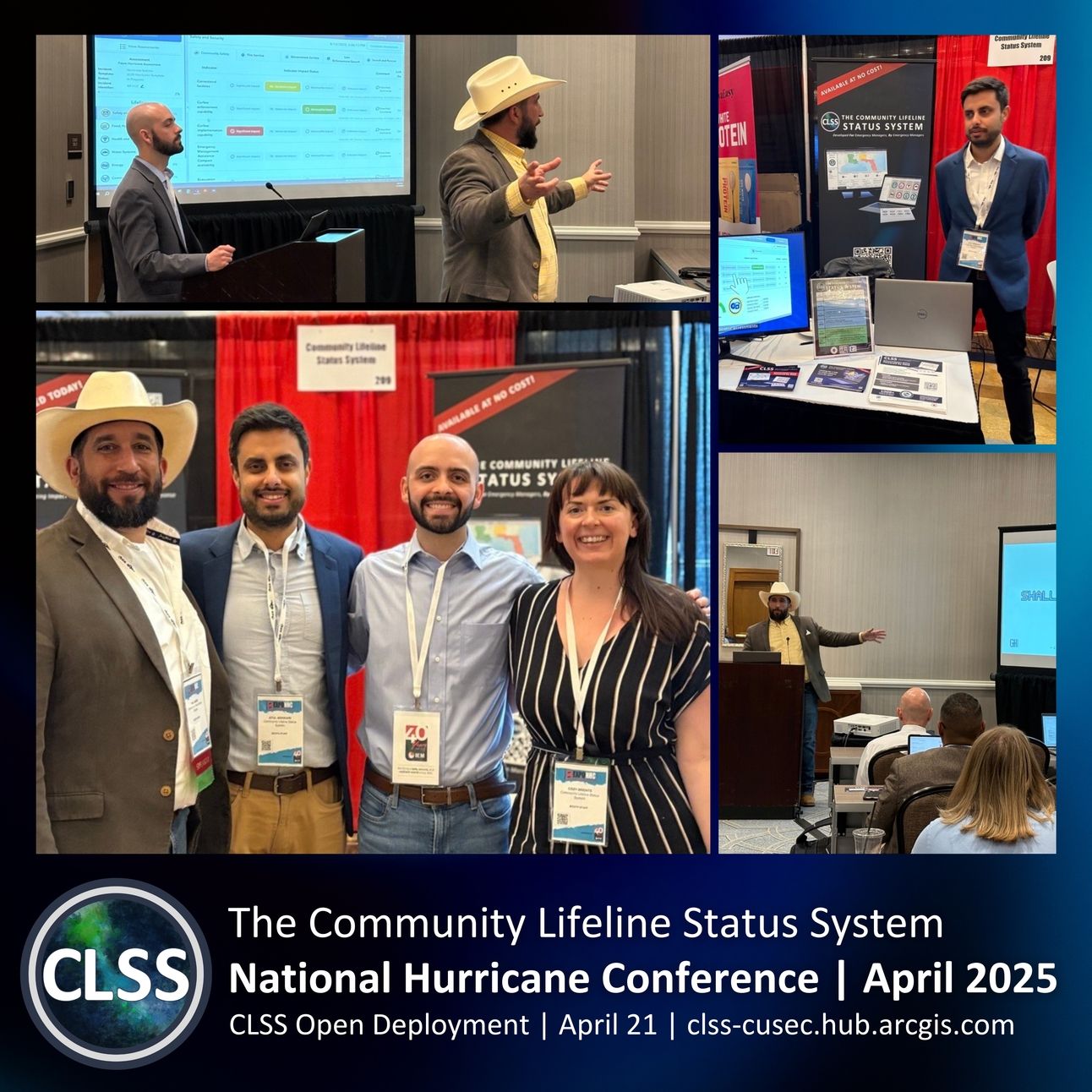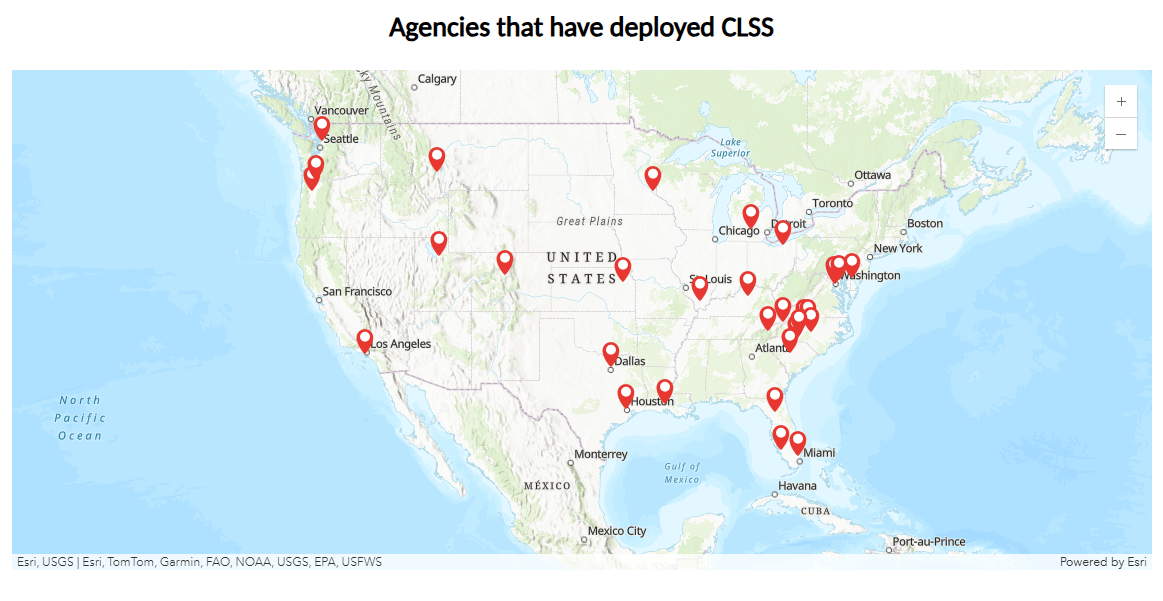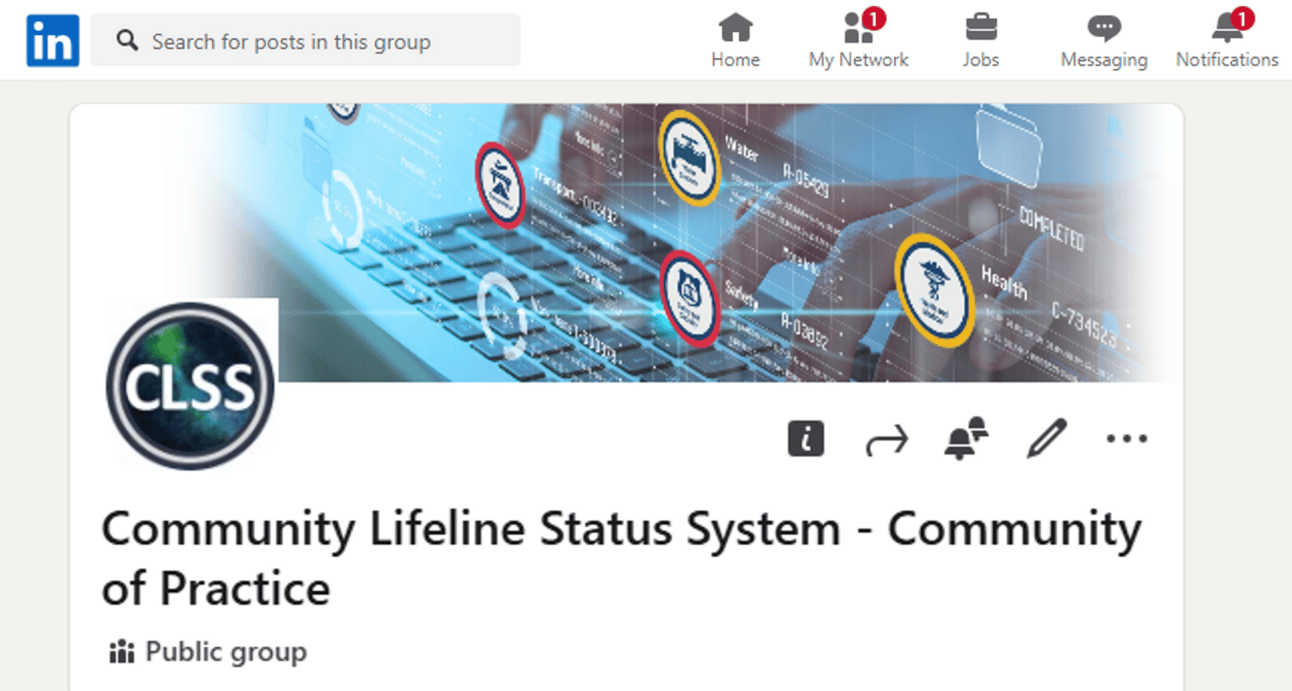- Community Lifelines Status System Newsletter
- Posts
- CLSS Connect Newsletter
CLSS Connect Newsletter
Summer Weather Hazards Are Here. Is Your Agency Ready?

The Community Lifeline Status System is now available for nationwide deployment — at no cost to government agencies
As hurricane season intensifies, wildfire risk increases, and tornadoes become more common, emergency managers across the country are under pressure to act faster, respond smarter, and communicate more clearly. The Community Lifeline Status System (CLSS) was built to help you do just that.
Developed with input from over 300 agencies, the CLSS turns raw data into real-time impact assessments. It gives your team a clear picture of what matters most during crisis response — and helps you prioritize resources using FEMA’s Community Lifelines
Now available for no-cost deployment, the CLSS is your opportunity to streamline impact analysis, boost situational awareness, and improve cross-agency communication before the next major event.
Book a CLSS demo to learn more
Need implementation support? Contact [email protected]
Deployment News
After three years of collaboration, innovation, and rigorous testing with over 300 agencies, we’re thrilled to announce that the CLSS is available for nationwide open deployment! This milestone wouldn’t have been possible without the dedication and expertise of the incredible emergency managers and agencies who partnered with us along the way.
Getting started with deployment is easy!
Fill out the form below
The CLSS team will send you deployment toolkit & guidance
Optional onboarding assistance from our team ensures your success
New Videos: What the CLSS Can Do for You
Get a firsthand look at the platform with two short videos now available:
Meet the CLSS – A quick walkthrough of features and benefits
Introduction from DHS S&T – Hear the vision behind CLSS from its federal backers
Explore Website Updates
We’ve launched an updated CLSS website and interactive story map to help you:
Learn what CLSS does and how it works
Find answers to frequently asked questions
Visualize the system’s evolution and real-world impact
Explore both today and help us spread the word by sharing them with your colleagues!
CLSS at the National Hurricane Conference

At this year’s National Hurricane Conference, CLSS drew significant attention from emergency management leaders seeking tools that make data more actionable during disaster response.
Key takeaways from the event:
Decision-makers want intuitive, visual tools to cut through data overload
Lifeline-based frameworks like CLSS are helping bridge the gap between data and response
CLSS stood out for its ease of use, flexibility, and alignment with FEMA’s coordination models
Highlights:
Workshop: Our session on “Next Gen EOC: Operationalizing Community Lifelines Through Data” explored how visuals can transcend language and literacy barriers in crisis situations.
Booth Conversations: We met passionate professionals eager to enhance resilience in their communities — thank you to all who stopped by!
A big thank you to everyone engaged with the CLSS team during the conference. We can’t wait to connect in the future!
Featured CLSS Updates
We’ve recently launched new features to give you even more power and flexibility:
Incident-based reporting – Share impact summaries tailored to specific events
Custom geographies – Define your own operational boundaries (e.g., UASI, counties, mutual aid regions)
These updates are designed to make your work faster, more strategic, and easier to share with leadership. Book a demo today to learn what these features can do for you.
Join the CLSS Community on LinkedIn
Introducing the CLSS Community of Practice!
We’re building a community of practice for CLSS users and emergency management professionals who want to exchange ideas, lessons learned, and implementation tips.
Join our CLSS LinkedIn Group to:
Ask and answer technical or operational questions
Share your agency’s implementation journey
Connect with fellow practitioners and thought leaders
Your participation will help strengthen our collective ability to monitor and restore critical lifelines during emergencies. We welcome all perspectives - from first-time users to experienced practitioners. Become part of this important professional dialogue today!
For the latest news, announcements, and featured content on the CLSS, follow G&H International Services, Inc. on LinkedIn.
Act Now: Contract Period Coming to a Close
CLSS was developed with the support of DHS Science & Technology (S&T), and the current contract period will end in just a few months. Continued federal funding is a possibility but has not yet been guaranteed.
What this means:
The CLSS will not go away when the contract ends: it was designed to be hosted on your agency’s Esri architecture — independent of outside funding
The CLSS is still available at no cost to all government agencies
All documentation, videos, and tools will continue to be accessible
What’s Next?
The GIS, emergency management, and other technical professionals from the G&H project team are here, committed to ensuring a smooth implementation of CLSS. If you need help kickstarting your deployment, now is the time to request support. Reach out to [email protected] to get started with deployment, support, or training for your team.
Looking Ahead
In our next issue:
Real-world case studies from current CLSS users
A deeper dive into CLSS integrations
Q&A opportunities and new training sessions
We want to hear from you!
We encourage you to share how CLSS has provided value to your agency in the LinkedIn CLSS Community of Practice. Your feedback and interest in use of the no cost CLSS may help drive decisions about future funding. Your success stories could be featured in our next newsletter!
Know someone who’d be interested in CLSS? Help us spread the word!
Be sure to add [email protected] to your “safe sender" list!

